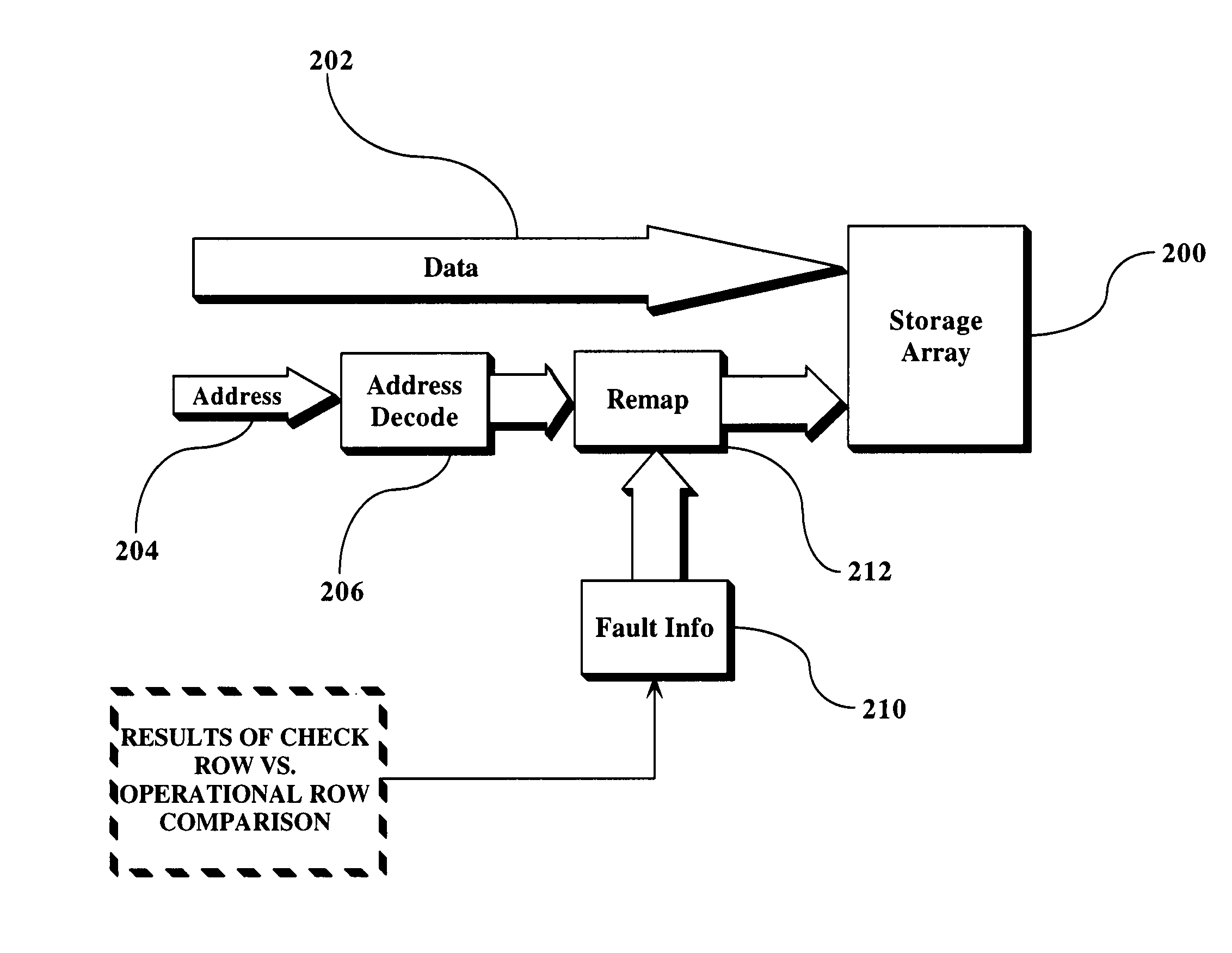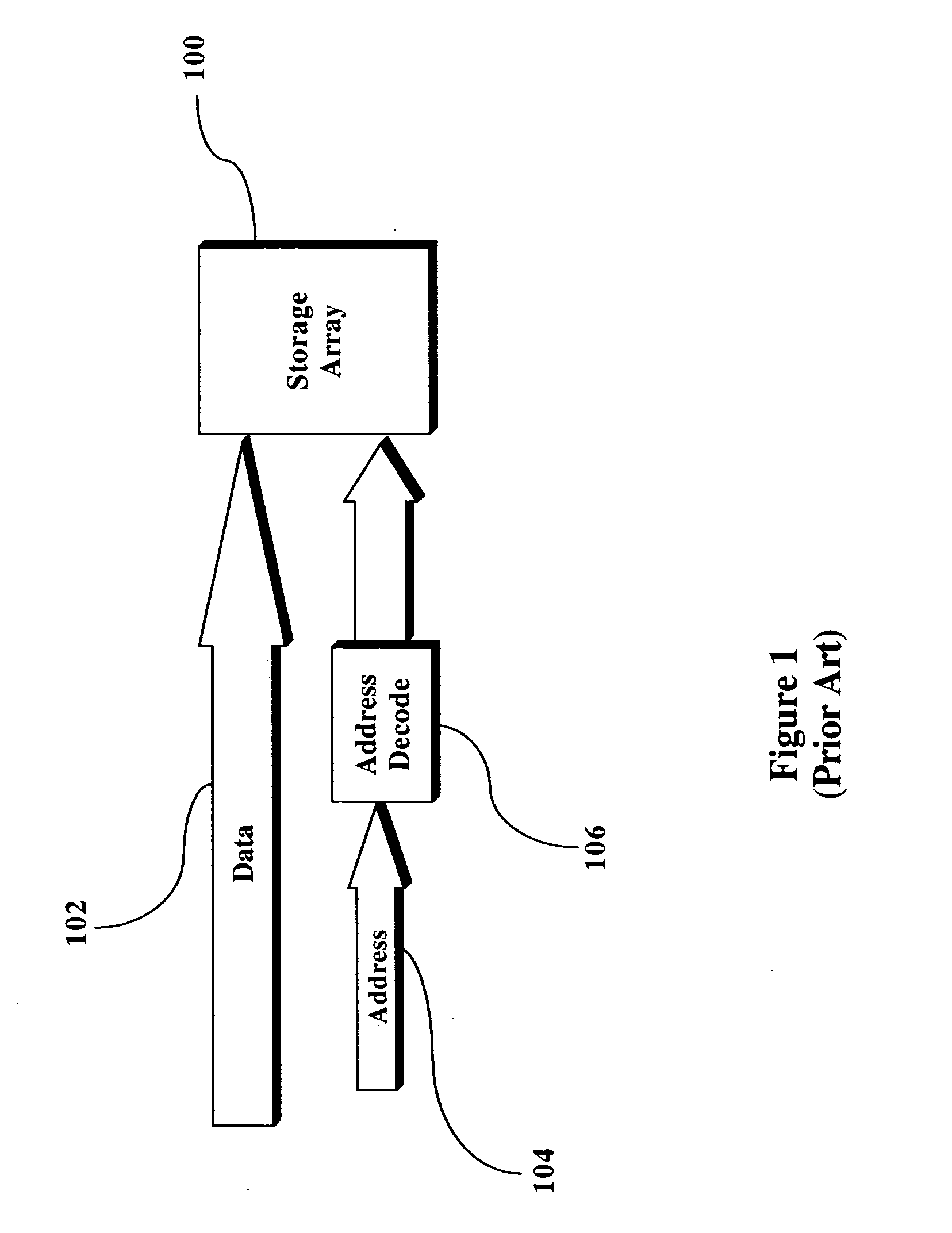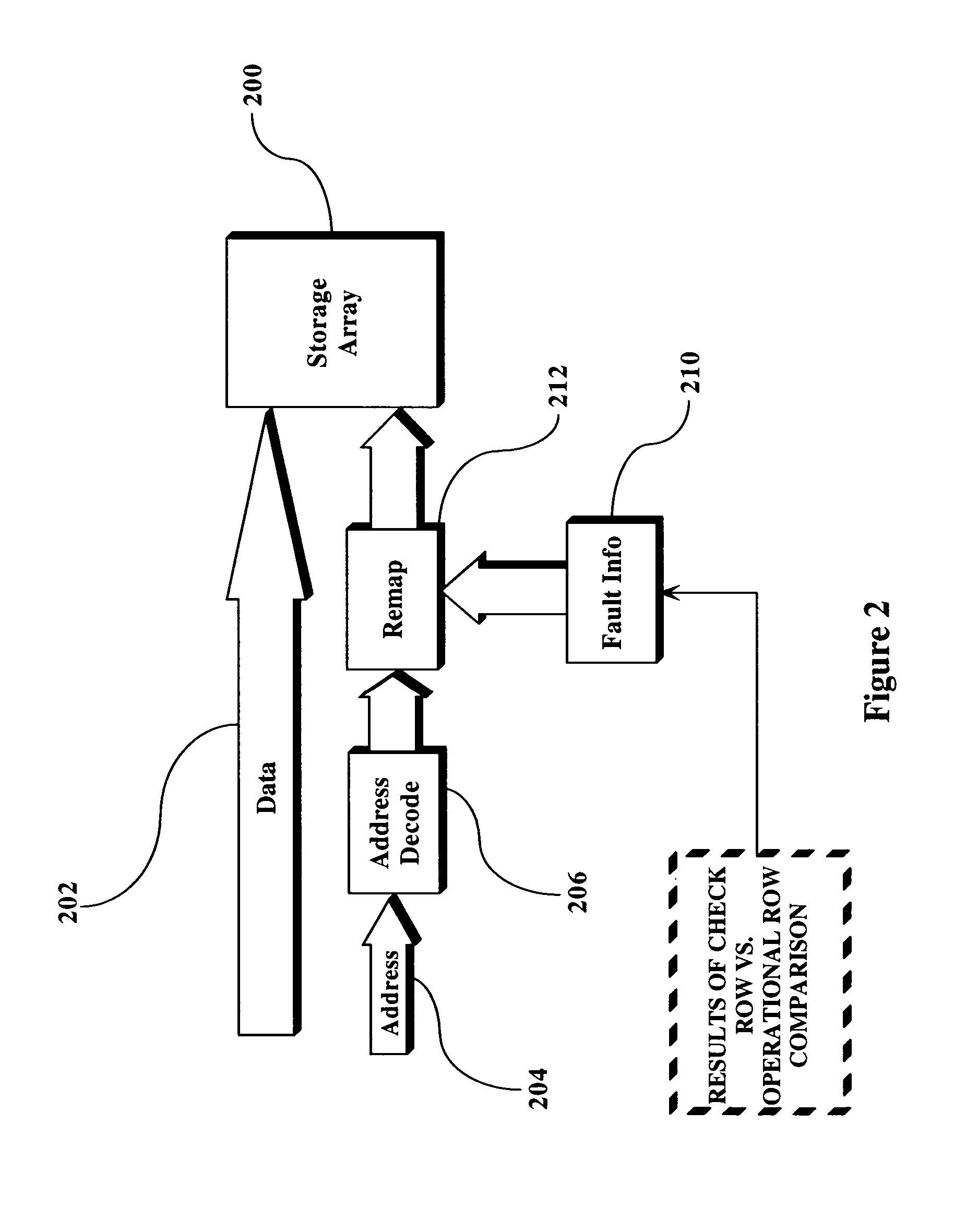Self-repairing of microprocessor array structures
- Summary
- Abstract
- Description
- Claims
- Application Information
AI Technical Summary
Benefits of technology
Problems solved by technology
Method used
Image
Examples
Embodiment Construction
[0016]FIG. 1 illustrates a typical prior art microprocessor and the manner in which data is loaded and stored within a storage array. More specifically, referring to FIG. 1, a storage array 100 receives data input 102. Simultaneously with the input, address information 104 is input to an address decoder 106. The address information contains the physical address where the data being input is to be written in the storage array 100. Address decoder 106 represents the logic that takes the address information from address information 104 and activates the proper entry in storage array 100 for writing / reading of the inbound and outbound data, i.e., it associates the input data with a particular physical address within the storage array 100. Faults in the array 100 will cause errors that are passed along down the pipeline via the data output from the array. If a BER system such as DIVA is utilized, the checker processor will identify and correct the error and flush the pipeline as describe...
PUM
 Login to View More
Login to View More Abstract
Description
Claims
Application Information
 Login to View More
Login to View More - R&D
- Intellectual Property
- Life Sciences
- Materials
- Tech Scout
- Unparalleled Data Quality
- Higher Quality Content
- 60% Fewer Hallucinations
Browse by: Latest US Patents, China's latest patents, Technical Efficacy Thesaurus, Application Domain, Technology Topic, Popular Technical Reports.
© 2025 PatSnap. All rights reserved.Legal|Privacy policy|Modern Slavery Act Transparency Statement|Sitemap|About US| Contact US: help@patsnap.com



